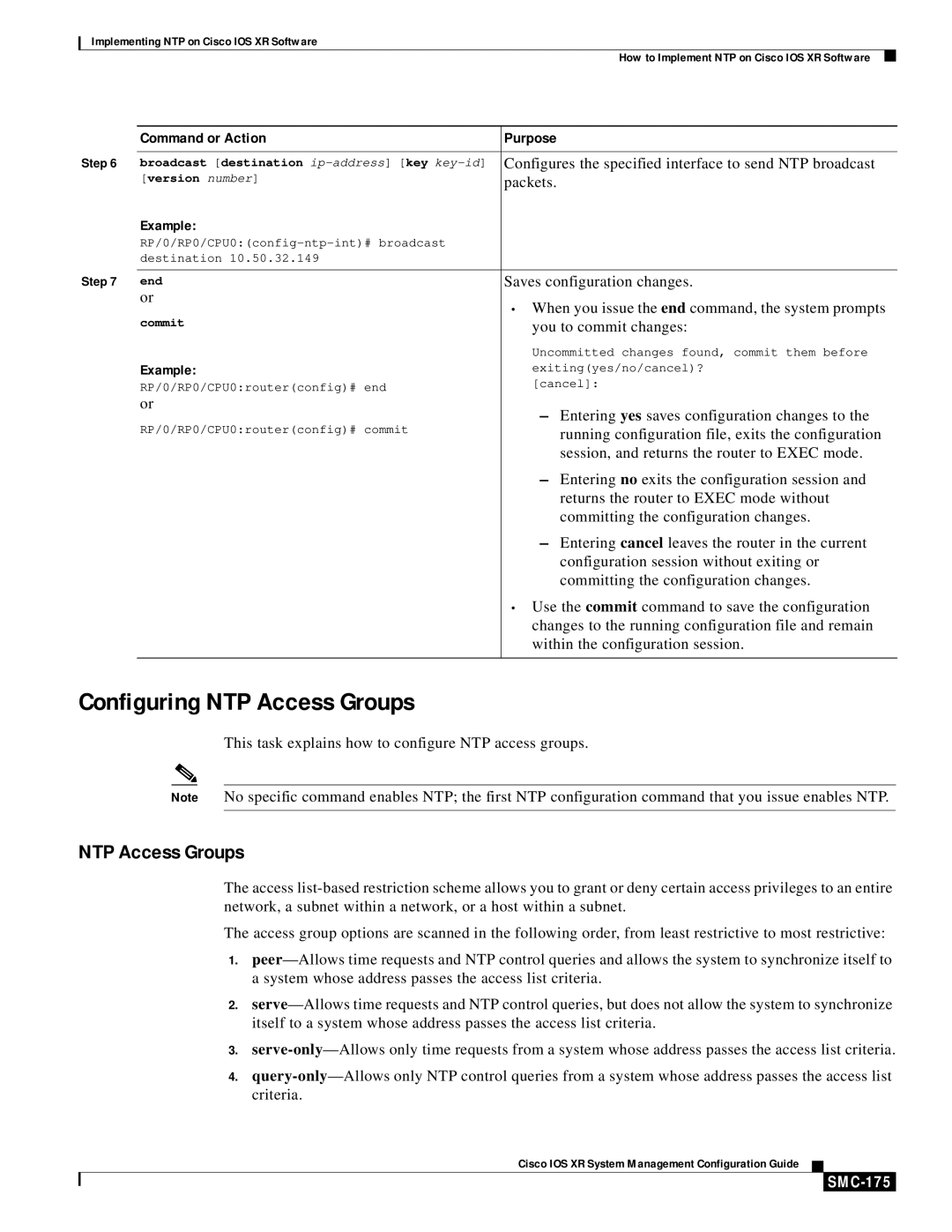
Implementing NTP on Cisco IOS XR Software
How to Implement NTP on Cisco IOS XR Software
| Command or Action | Purpose |
Step 6 |
|
|
broadcast [destination | Configures the specified interface to send NTP broadcast | |
| [version number] | packets. |
| Example: |
|
|
| |
| destination 10.50.32.149 |
|
Step 7 |
|
|
end | Saves configuration changes. | |
| or | • When you issue the end command, the system prompts |
|
| |
| commit | you to commit changes: |
|
| Uncommitted changes found, commit them before |
| Example: | exiting(yes/no/cancel)? |
| RP/0/RP0/CPU0:router(config)# end | [cancel]: |
|
| |
| or | – Entering yes saves configuration changes to the |
| RP/0/RP0/CPU0:router(config)# commit | |
| running configuration file, exits the configuration | |
|
| session, and returns the router to EXEC mode. |
|
| – Entering no exits the configuration session and |
|
| returns the router to EXEC mode without |
|
| committing the configuration changes. |
|
| – Entering cancel leaves the router in the current |
|
| configuration session without exiting or |
|
| committing the configuration changes. |
|
| • Use the commit command to save the configuration |
|
| changes to the running configuration file and remain |
|
| within the configuration session. |
|
|
|
Configuring NTP Access Groups
This task explains how to configure NTP access groups.
Note No specific command enables NTP; the first NTP configuration command that you issue enables NTP.
NTP Access Groups
The access
The access group options are scanned in the following order, from least restrictive to most restrictive:
1.
2.
3.
4.
Cisco IOS XR System Management Configuration Guide
